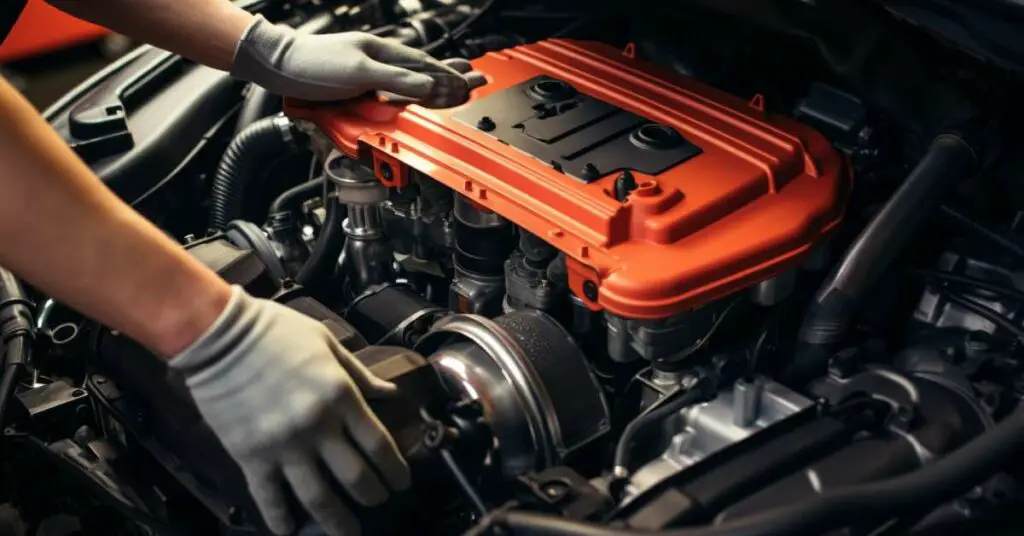The lifeblood of your VW Tiguan’s engine isn’t just oil, but coolant as well. This critical fluid maintains your car’s temperature, ensuring optimal performance and longevity. But what happens when you need to add more? Where does the coolant go in your VW Tiguan? We’ll explore these queries and more in this in-depth guide. Let’s dive in and keep your vehicle running at its peak.
Understanding the Role of Coolant in Your VW Tiguan
Any conversation about vehicle maintenance inevitably gravitates towards engine oil. It’s undeniably important, but equally essential is the coolant, a substance that often goes overlooked. Coolant, or antifreeze, plays an imperative role in regulating your VW Tiguan’s engine temperature, especially under demanding conditions like scorching summers or frosty winters.
The Tiguan, like any other vehicle, uses a liquid cooling system where coolant absorbs the heat generated by the engine, circulates through the radiator to dissipate this heat, and then recycles back into the engine. It’s a continuous process vital for maintaining engine temperature within optimal limits. Overheating can lead to severe engine damage, underscoring the significance of maintaining adequate coolant levels.
But it’s not just about preventing overheating. The coolant in your VW Tiguan also plays a crucial role in combating engine corrosion and lubricating the water pump. By protecting the metal components from rust and ensuring the water pump runs smoothly, coolant plays an all-round role in keeping your vehicle’s heart – its engine – healthy.
However, coolant doesn’t last forever. It deteriorates over time and loses its effectiveness, necessitating a periodic check and refill or replacement. The key to a smoothly running VW Tiguan is timely coolant maintenance, as neglect can result in expensive repairs and inconvenience.

The Right Coolant for Your VW Tiguan
Knowing when and why to top up your coolant is one part of the puzzle. Equally significant is choosing the right coolant for your Tiguan. Volkswagen vehicles, including the Tiguan, typically require a G13 or G12 approved coolant. This specialized coolant is a mixture of antifreeze and distilled water in a 50/50 ratio, providing optimal freezing and boiling protection while preventing corrosion.
Utilizing the recommended coolant is crucial. It’s not just about the temperature regulation capabilities but also about preventing internal corrosion. The wrong coolant can lead to metal corrosion and rust, causing significant damage to your engine and cooling system components.
Remember, although other coolants may seem compatible, they might not offer the same level of protection and could lead to unexpected issues down the line. Therefore, to safeguard your Tiguan’s engine and ensure it runs smoothly, always use the manufacturer-recommended coolant.
When to Add or Change Coolant in Your VW Tiguan
Now that we’ve covered the significance of coolant and the right type to use, it’s time to answer the question: “When should I add or change coolant in my VW Tiguan?”
Firstly, it’s crucial to regularly check your coolant levels. Volkswagen recommends doing so at least once a year or every 10,000 miles, whichever comes first. However, keep an eye out for signs that might indicate a low coolant level or need for change. These could include a high engine temperature gauge reading, frequent engine overheating, or your vehicle’s warning light illuminating.
Moreover, while the coolant level is an important aspect, it’s also necessary to pay attention to its condition. If the coolant appears discolored, sludgy, or has a foul smell, it’s an indication that the coolant needs changing.
Even if none of these signs are apparent, as a rule of thumb, you should completely flush and replace the coolant every three to five years. This ensures that your engine and its components remain well-protected and function at their best. Remember, proactive coolant management is an investment in your vehicle’s longevity.
Step-By-Step Guide on Adding Coolant to Your VW Tiguan
So, you’ve checked the coolant level in your VW Tiguan, and it’s time to add some more. Here’s a detailed, step-by-step guide on how to do it correctly and safely.
Step 1: Locating the Coolant Reservoir The first thing you need to do is locate the coolant reservoir. In the VW Tiguan, this is typically found on the driver’s side of the engine bay. It’s a white or translucent container with markings on the side to indicate the coolant levels.
Step 2: Checking the Coolant Level Before you add any coolant, it’s important to verify that you need to do so. Look at the markings on the side of the coolant reservoir. There should be two lines – one for the maximum level and one for the minimum. Ideally, the coolant level should be between these two lines. If it’s below the minimum line, you’ll need to add more.
Step 3: Preparing to Add Coolant Before opening the coolant reservoir, ensure your vehicle is cool. Never open the coolant reservoir when the engine is hot as it can cause hot coolant to spray out, leading to burns. Once the vehicle is cool, open the coolant reservoir by turning the cap counterclockwise.
Step 4: Adding the Coolant Now, it’s time to add the coolant. Remember to use a G13 or G12 approved coolant, as we discussed earlier. Slowly pour the coolant into the reservoir until it reaches the maximum line. Be careful not to overfill.
Step 5: Rechecking the Coolant Level After you’ve added the coolant, replace the cap and start the vehicle. Let it run for a few minutes, then shut it off and let it cool down. Once it’s cool, recheck the coolant level. If it’s still below the minimum line, you may need to add more coolant. If it’s between the two lines, you’re good to go.
Safety Tips When Handling Coolant
While adding coolant to your VW Tiguan isn’t overly complex, safety must always come first. Here are some key precautions to take:
- Always check coolant levels when the engine is cool. Coolant can become extremely hot when the engine is running and can cause severe burns if it splashes onto skin.
- Wear protective gear. This includes gloves and eye protection to prevent any accidental splashing of coolant onto your skin or into your eyes.
- Dispose of old coolant correctly. Coolant is toxic and can be harmful to both humans and the environment. Always dispose of it at a designated recycling facility.
By following these safety tips, you can ensure you’re doing the best for both your VW Tiguan and your wellbeing. It’s a win-win!
Troubleshooting Common Issues
While adding coolant to your VW Tiguan might seem straightforward, you may encounter a few hurdles along the way. Here are some common issues and how to troubleshoot them:
Issue 1: Coolant Level Keeps Dropping If you notice the coolant level consistently dropping soon after topping up, this could indicate a leak in the system. Check under your vehicle for any signs of puddles or drips. Also, examine the radiator, hoses, water pump, and the coolant reservoir itself for cracks or damage. If a leak is evident, it’s essential to seek professional help to get it fixed.
Issue 2: Overheating Despite Adequate Coolant Level An overheating engine despite sufficient coolant levels can signal several issues. There could be a problem with the thermostat, water pump, radiator, or even a severe engine issue. In such cases, it’s best to consult with a professional to diagnose and address the problem.
Issue 3: Uncertain About Coolant Type You may have doubts about the type of coolant to use. Always refer to your vehicle’s owner’s manual for the correct coolant type. Using the wrong coolant can lead to reduced performance and possible engine damage.
When to Seek Professional Help
While adding coolant is generally a simple task, certain situations require professional attention. If you’re unsure about any aspect of the process, it’s always better to consult with a professional. Similarly, if you encounter persistent issues like frequent overheating, leaks, or you notice the coolant in poor condition during regular checks, professional help should be sought.
Remember, attempting to fix issues without adequate knowledge may lead to further damage and incur higher repair costs. Keeping your Tiguan in top-notch condition sometimes means knowing when to step back and let the experts handle it.
Conclusion
Maintaining the coolant level in your VW Tiguan is more than just a chore; it’s an essential part of caring for your vehicle. By monitoring the coolant regularly, using the right type, and understanding when to seek help, you’re investing in your vehicle’s longevity and performance. Remember, your Tiguan is only as good as the care you give it. So, keep it cool and carry on cruising!

As a seasoned mechanic and proud owner of three successful car workshops, I’ve dedicated my life to helping people just like you overcome their everyday automotive challenges. I created this website as a labor of love, with a simple mission: to make car maintenance and repairs more accessible and approachable for the “average joe.”
